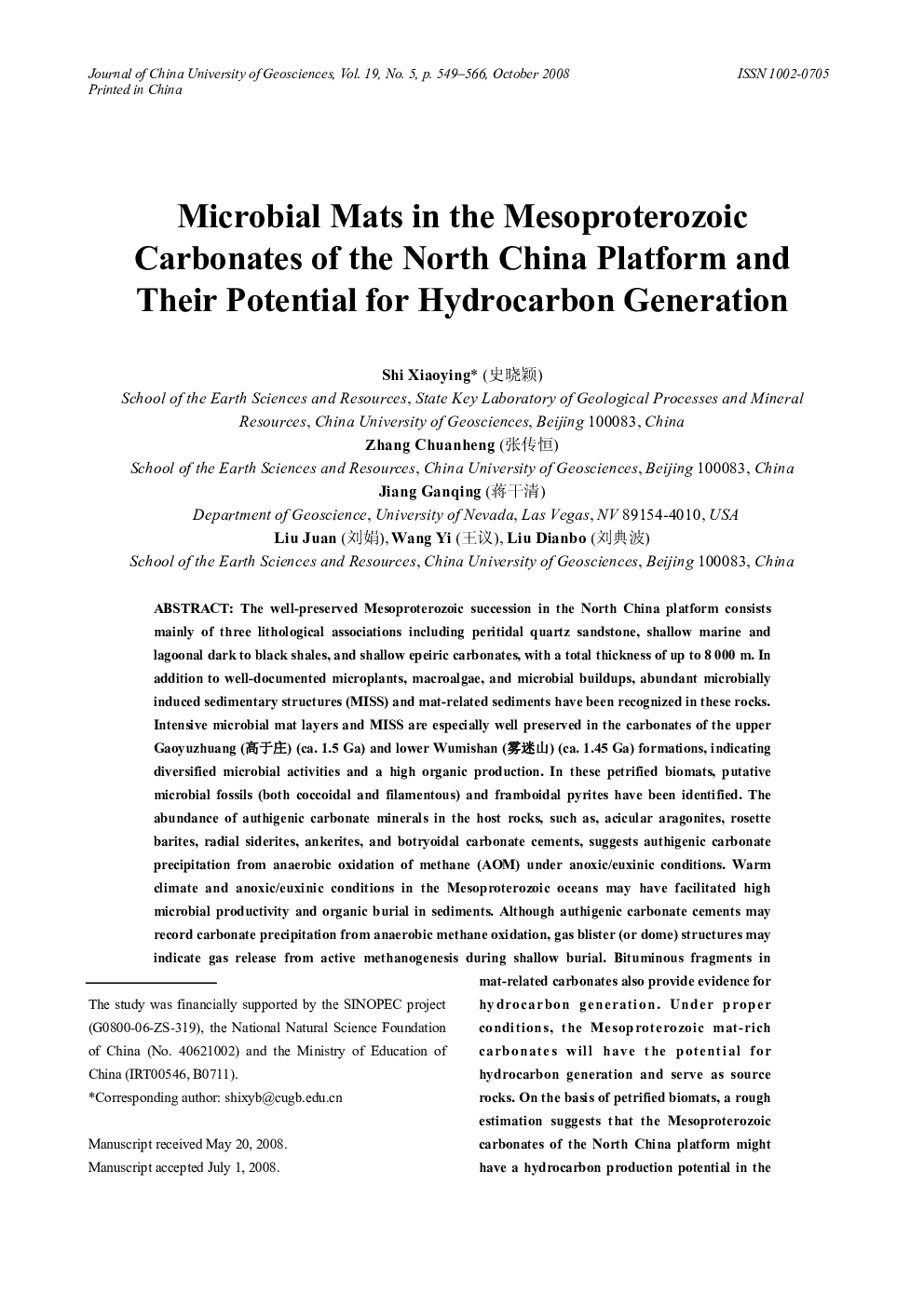| Article ID | Journal | Published Year | Pages | File Type |
|---|---|---|---|---|
| 4687746 | Journal of China University of Geosciences | 2008 | 18 Pages |
Abstract
The well-preserved Mesoproterozoic succession in the North China platform consists mainly of three lithological associations including peritidal quartz sandstone, shallow marine and lagoonal dark to black shales, and shallow epeiric carbonates, with a total thickness of up to 8 000 m. In addition to well-documented microplants, macroalgae, and microbial buildups, abundant microbially induced sedimentary structures (MISS) and mat-related sediments have been recognized in these rocks. Intensive microbial mat layers and MISS are especially well preserved in the carbonates of the upper Gaoyuzhuang (ca. 1.5 Ga) and lower Wumishan (ca. 1.45 Ga) formations, indicating diversified microbial activities and a high organic production. In these petrified biomats, putative microbial fossils (both coccoidal and filamentous) and framboidal pyrites have been identified. The abundance of authigenic carbonate minerals in the host rocks, such as, acicular aragonites, rosette barites, radial siderites, ankerites, and botryoidal carbonate cements, suggests authigenic carbonate precipitation from anaerobic oxidation of methane (AOM) under anoxic/euxinic conditions. Warm climate and anoxic/euxinic conditions in the Mesoproterozoic oceans may have facilitated high microbial productivity and organic burial in sediments. Although authigenic carbonate cements may record carbonate precipitation from anaerobic methane oxidation, gas blister (or dome) structures may indicate gas release from active methanogenesis during shallow burial. Bituminous fragments in mat-related carbonates also provide evidence for hydrocarbon generation. Under proper conditions, the Mesoproterozoic mat-rich carbonates will have the potential for hydrocarbon generation and serve as source rocks. On the basis of petrified biomats, a rough estimation suggests that the Mesoproterozoic carbonates of the North China platform might have a hydrocarbon production potential in the order of 10 Ã 108 t.
Related Topics
Physical Sciences and Engineering
Earth and Planetary Sciences
Earth-Surface Processes
Authors
Shi Xiaoying, Zhang Chuanheng, Jiang Ganqing, Liu Juan, Wang Yi, Liu Dianbo,
